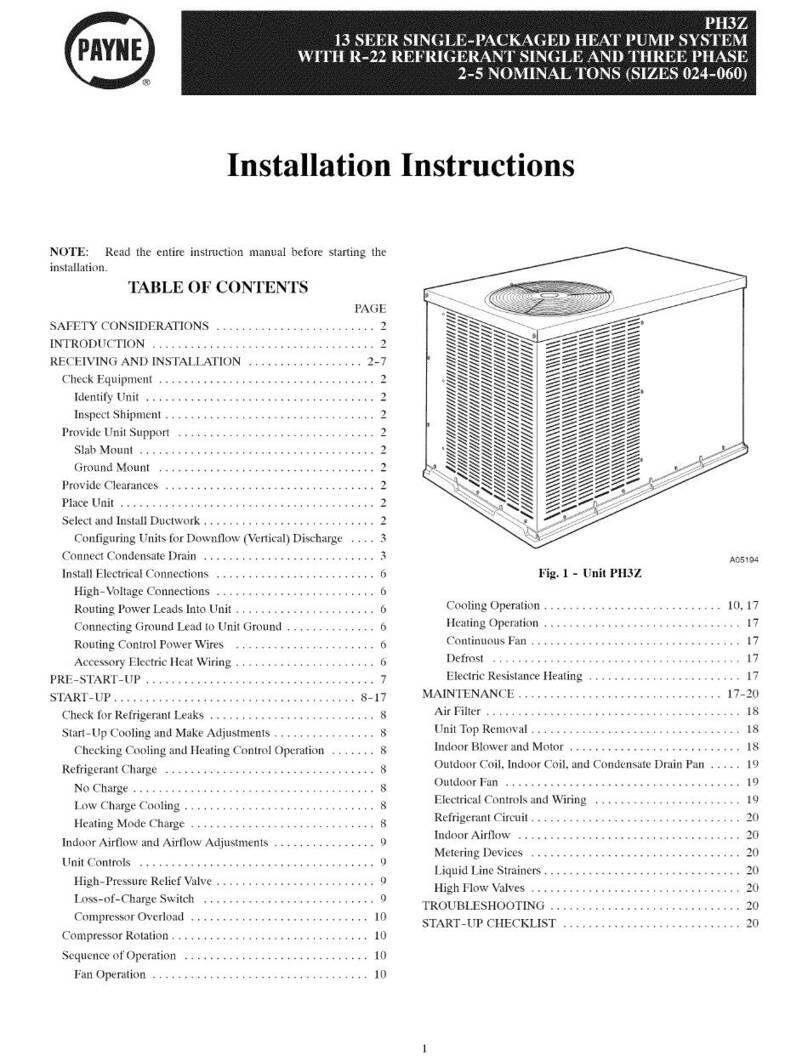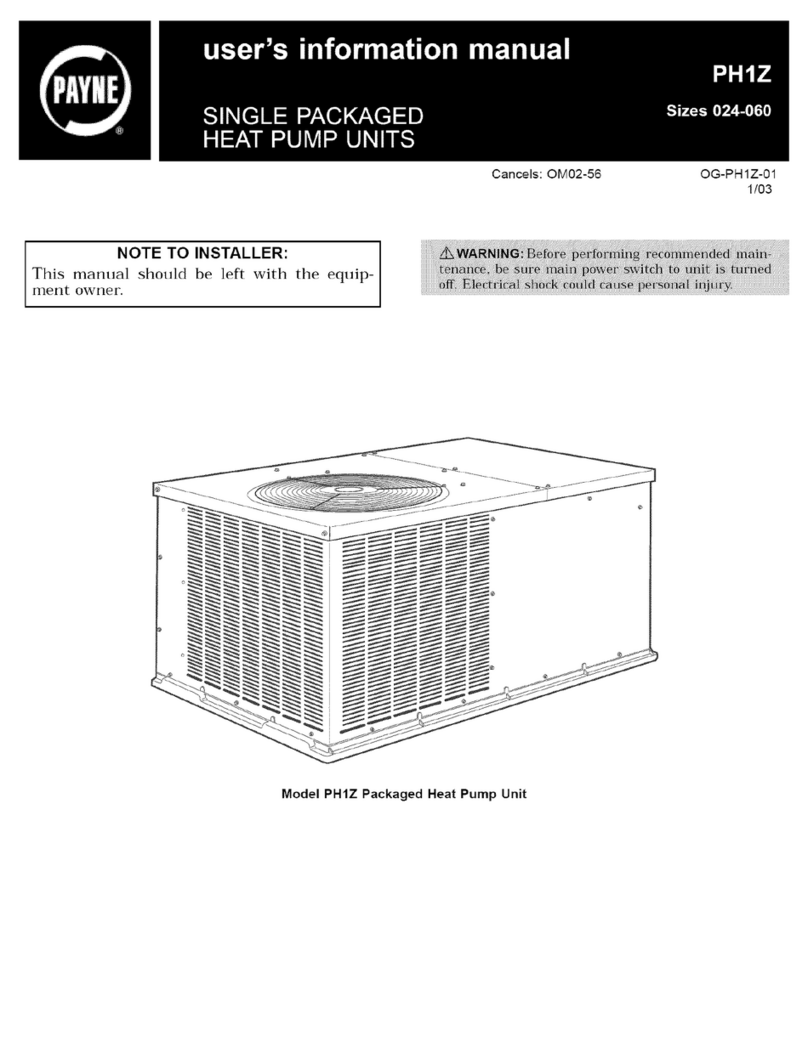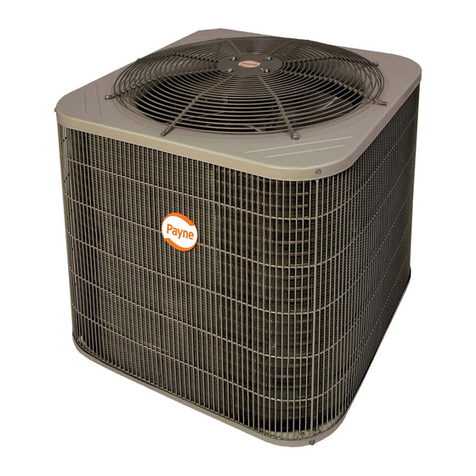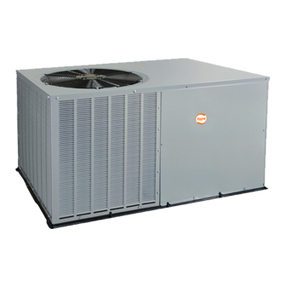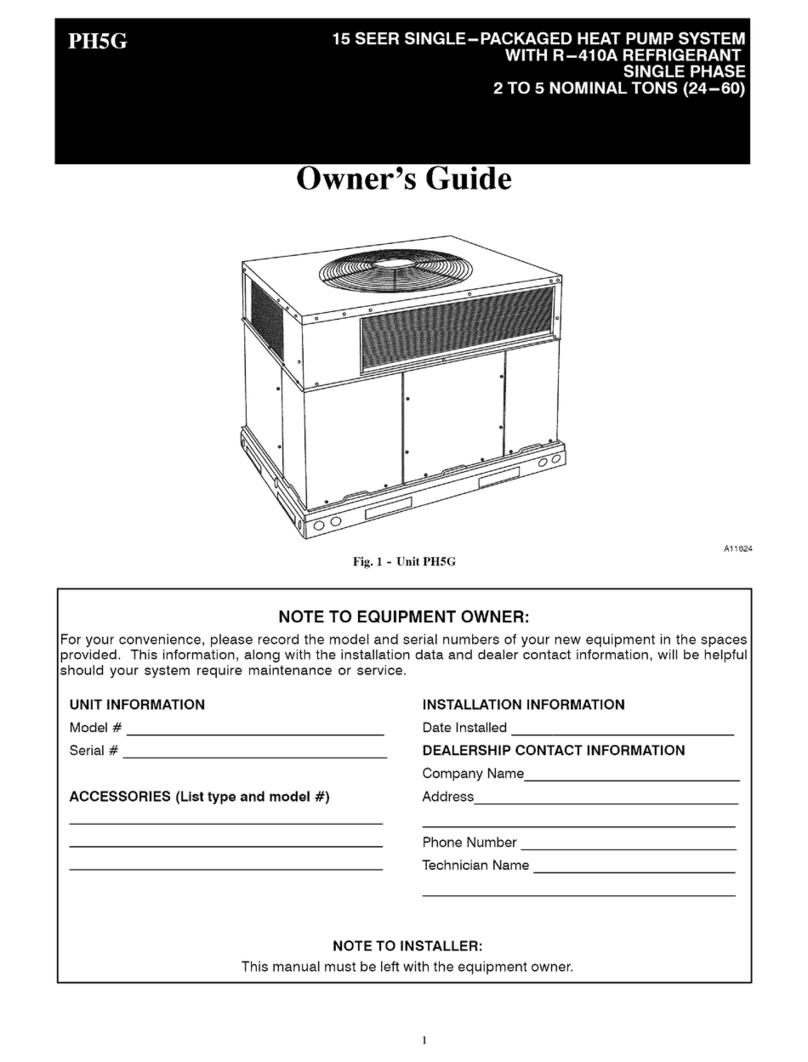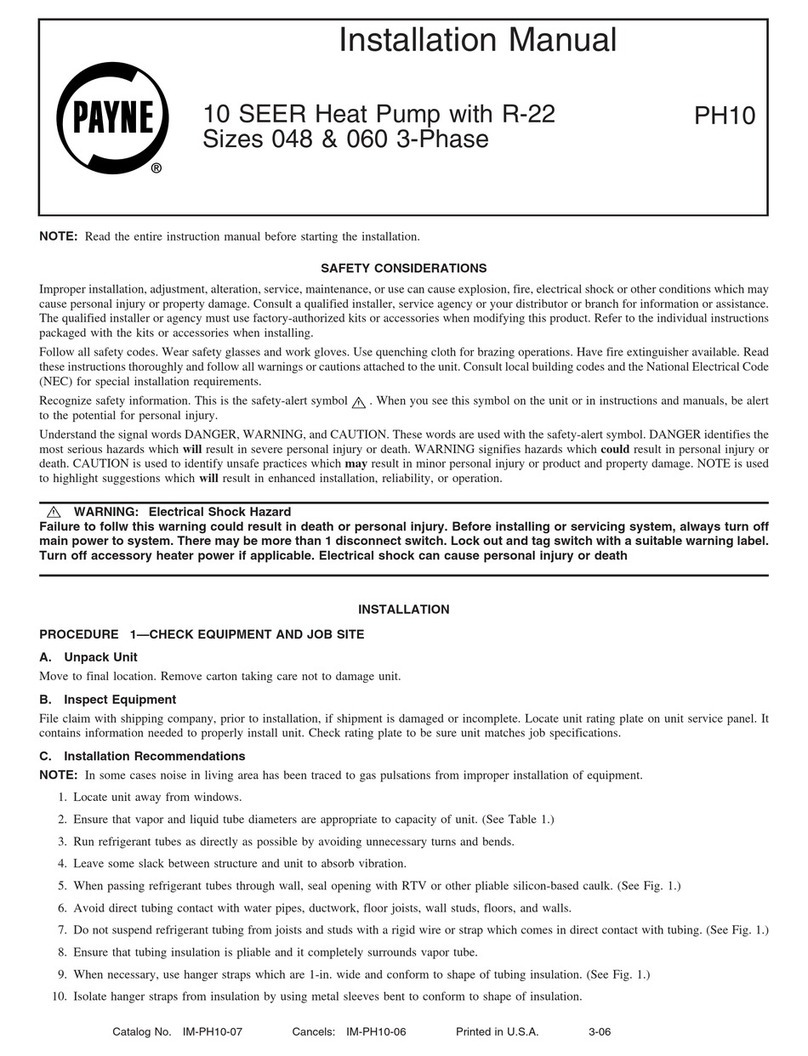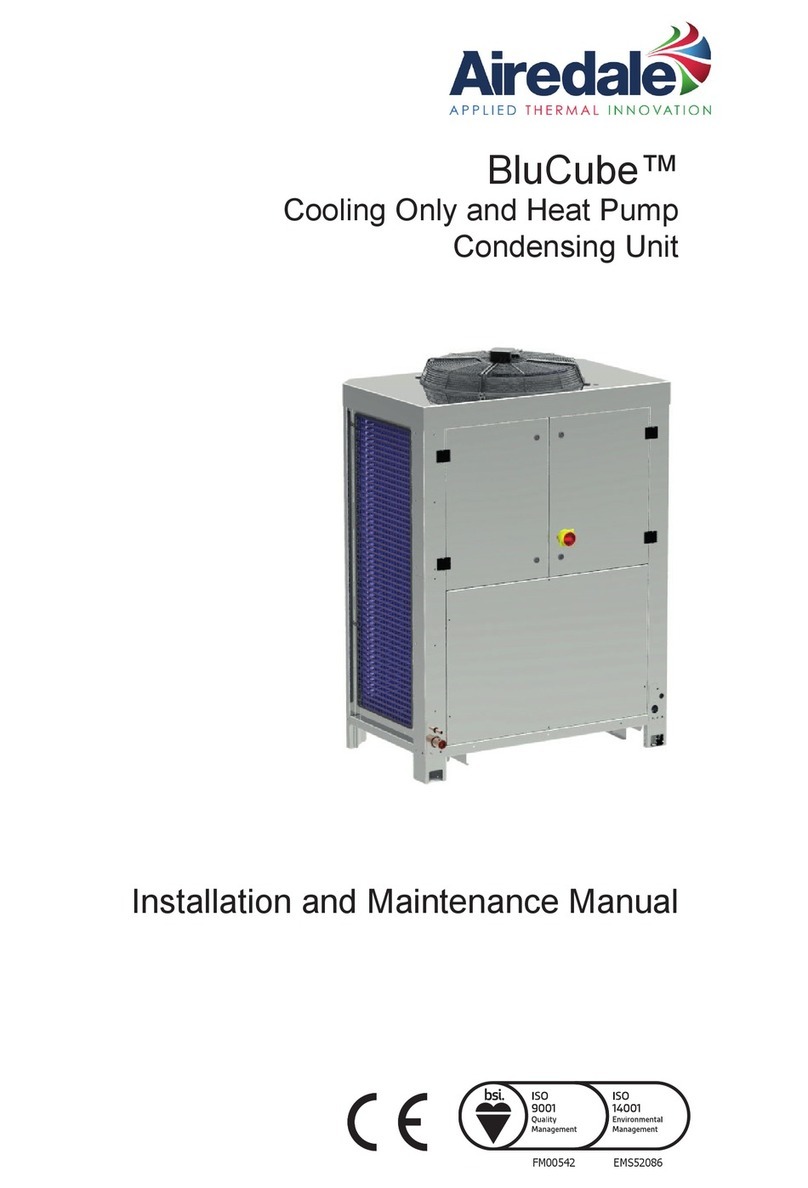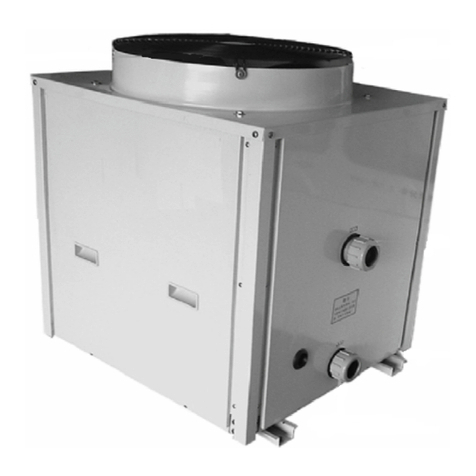
3
IMPORTANT FACTS
To better protect your investment and to eliminate unnecessary service calls, familiarize yourself with the following facts:
• Your heat pump system should never be operated without a clean air filter properly installed. Plan to inspect the filter periodically.A
clogged air filter will increase operating costs and shorten the life of the unit.
• Supply-air and return-air registers should not be blocked. Drapes, furniture, and toys are some of the items commonly found obstruct-
ing grilles. Restricted airflow lessens the unit’s efficiency and life span.
• The outdoor unit must have unrestricted airflow. Do not cover the unit, lean anything against it, or stand upon it. Do not allow grass
clippings, leaves, or other debris to accumulate around or on top of the unit. Maintain a 12-in. minimum clearance between the
outdoor unit and tall grass, vines, shrubs, etc.
• Your multipurpose indoor thermostat is the control center for your heat pump system.You should familiarize yourself with its proper
operation.Attempting to control the system by other means—for instance, switching the electrical supply power ON and OFF—may
cause damage to the unit.
• During heating, increasing the thermostat more than 2 degrees may cause the supplemental heaters to be turned on to satisfy the
thermostat. Needless use of the supplementary heat reduces potential energy savings.
• You may find that you can maintain greater personal comfort by running the fan continuously.Air pockets can form due to the structure
of the house, placement of registers, etc. These air pockets may be too cool or warm for your liking. Continuous fan operation minimizes
anytemperaturedifferences.Also, systemsequipped with electronic air cleaners and/or humidifiers offertheadded benefitsof havingthe
air continuously cleaned year-round, and humidified during the winter season.
• Your heat pump will remove humidity from your home during the cooling season.After a few minutes of operation, you should be
able to see water trickle from the condensate drain of the indoor cooling coil. Check this occasionally to be sure the drain system is
not clogged. Of course, don’t expect to see much drainage if you live in a very dry environment.
• During the heating cycle, air from your registers may seem cool. This is because the air is being delivered at a higher velocity and a
more constant flow than air supplied by a conventional furnace.Also, your heat pump supplies air at 85° to 90°F instead of in sudden
bursts of hot air as with a conventional furnace. The air may feel cool because it is slightly lower than your body temperature.
However, it is sufficiently warm to keep you comfortable.
• Ice or frost will tend to form on the outdoor coil during the winter heating operation.Your heat pump is designed to automatically
melt the ice. When in this defrost cycle, it is normal for steam or fog to rise from the outdoor unit. Do not be alarmed!
OPERATINGYOUR HEAT PUMP
The operation of your heat pump system is controlled by the indoor thermostat. (See Fig. 2.)You simply adjust the thermostat and
it maintains the indoor temperature at the level you select.
Some thermostats possess two temperature control settings: one for setting the temperature desired during the cooling cycle, and one
for setting the temperature desired during the heating cycle.
The FAN button offers two options for controlling the blower: AUTO and ON. When set to AUTO, the blower will run during the
time the heat pump is operating. When the FAN is set to ON, the blower will run continuously.
Typically, your thermostat offers the followingselections: COOL, OFF, and HEAT.Your thermostat may also have a fourth selection,
AUTO. The heat pump will not operate if OFF is selected. If COOL is selected, your heat pump will operate in its cooling mode
whentheindoortemperaturerisesabovethelevel thatyou wishto maintain.If HEAT isselected, yourheat pumpwill provide warmth
whenever the indoor temperature falls below the level that you have selected.
TheAUTOselectionfound onsome thermostatsprovidesforautomatic changeoverbetweencoolingand heatingcycles. WithAUTO
selected, the cooling mode is activated when the indoor temperature rises above the thermostat cooling temperature setting, or the
heating mode will be activated when the indoor temperature drops below the thermostat setting for the heating cycle.
Fig. 2—Typical Thermostat
<
<

